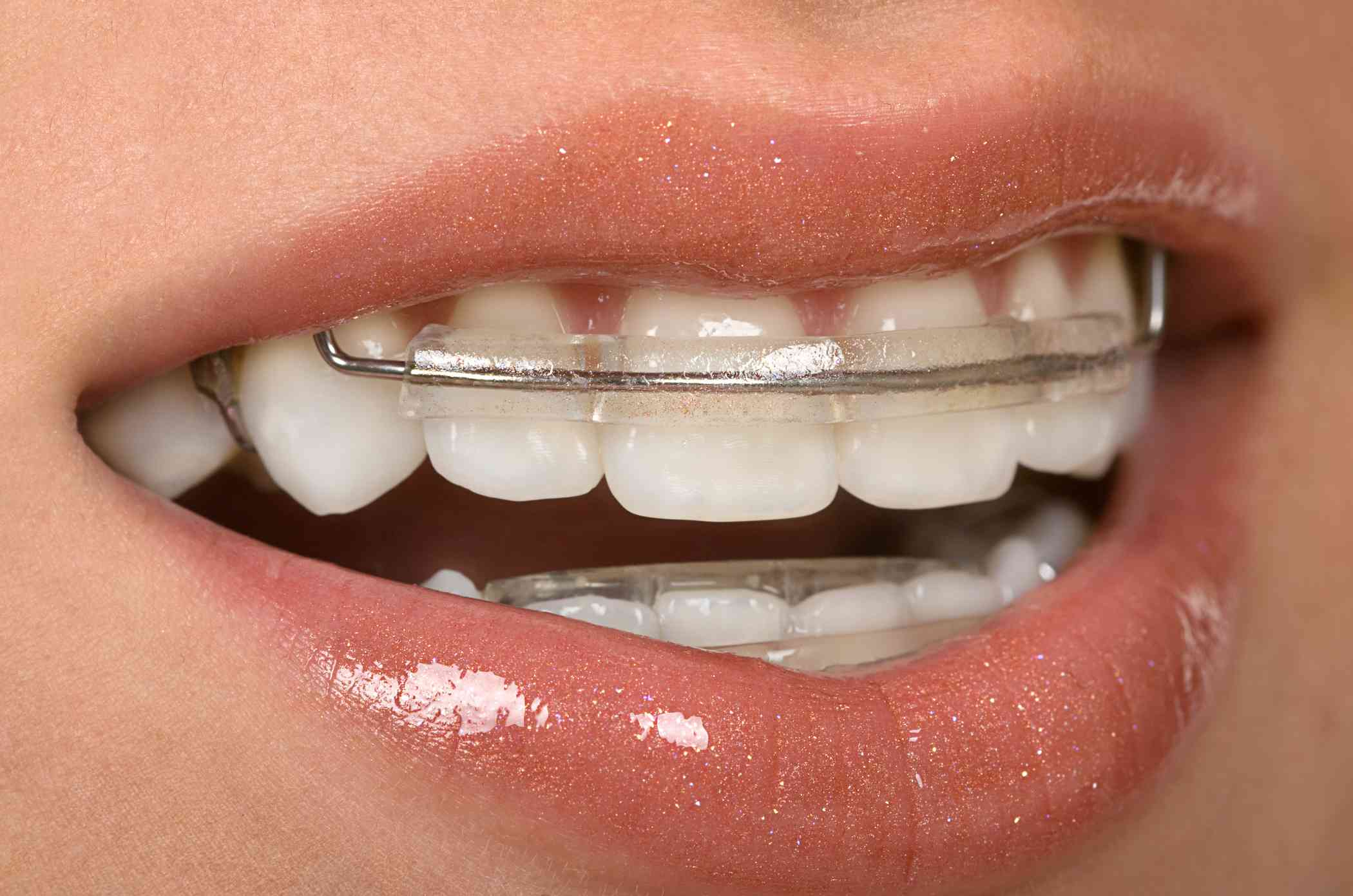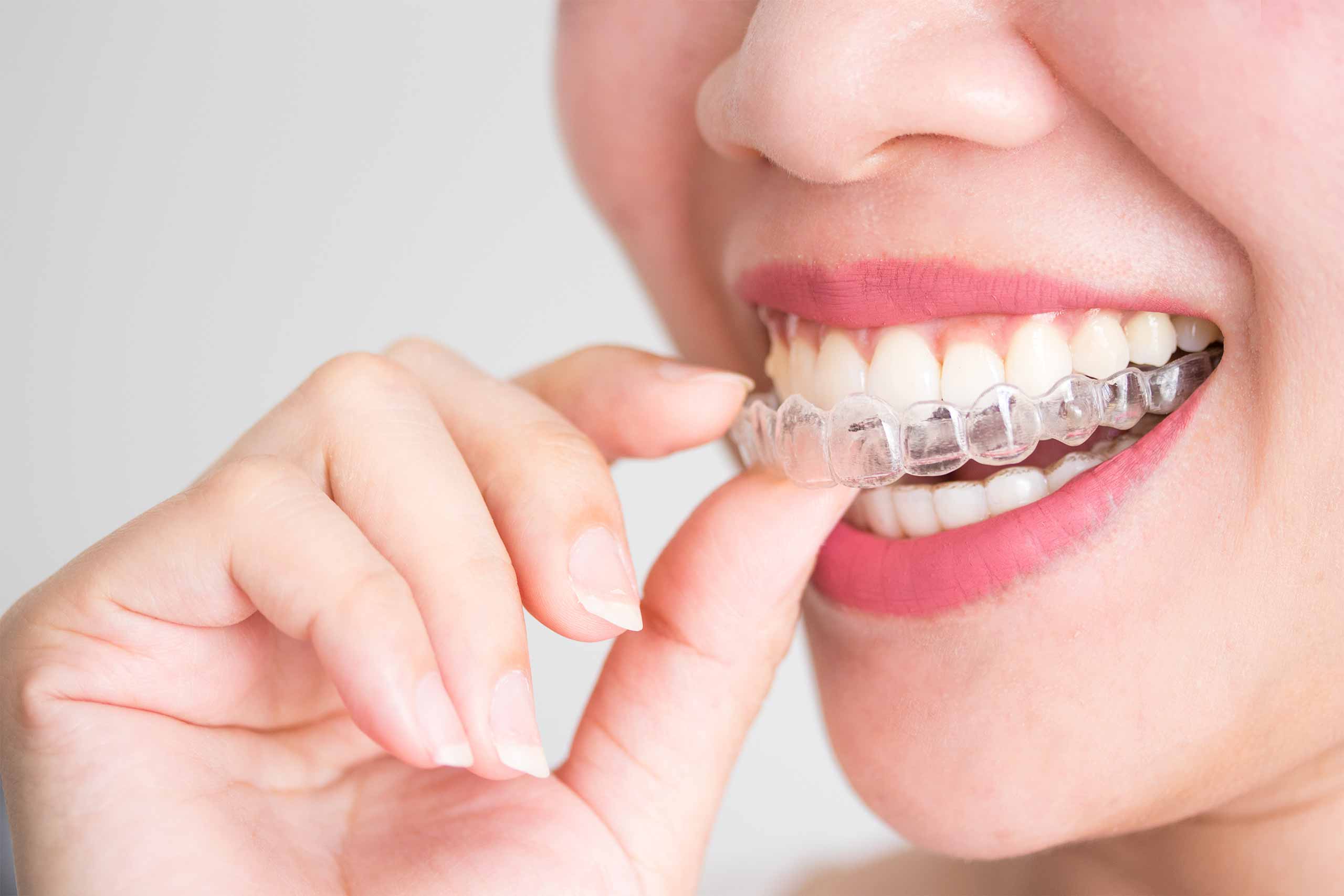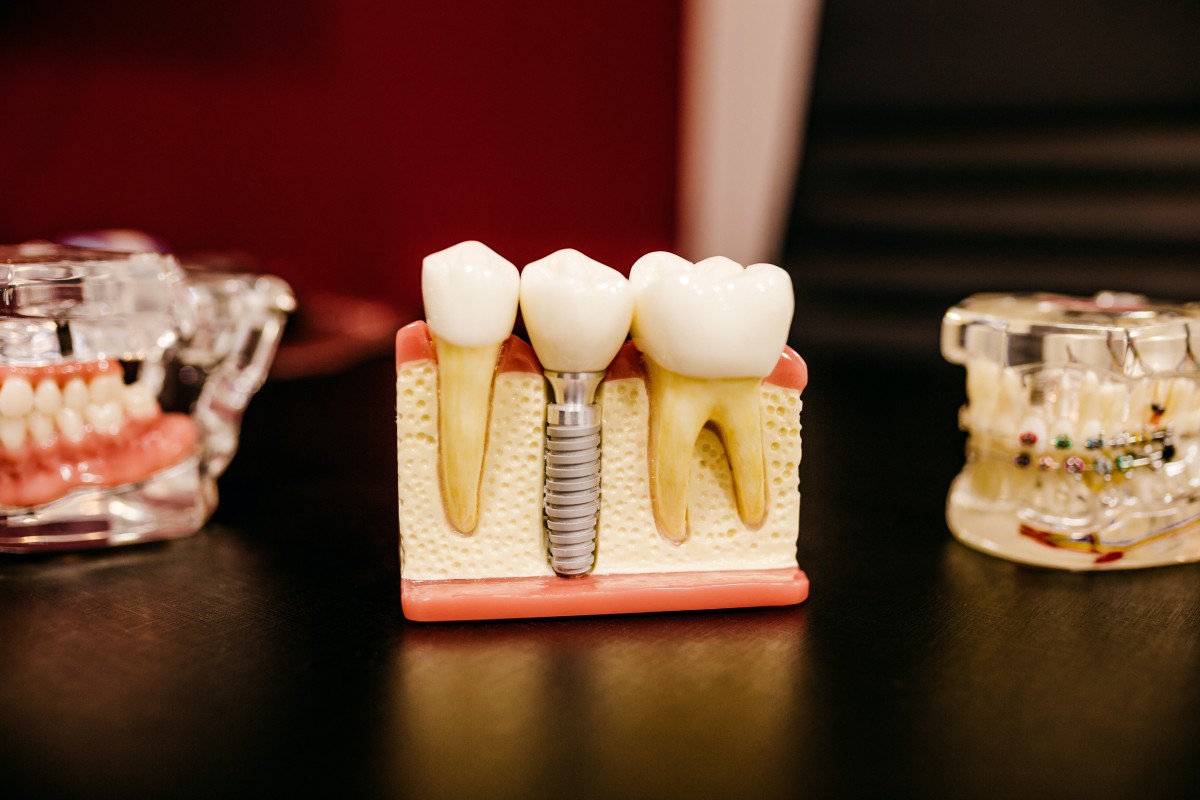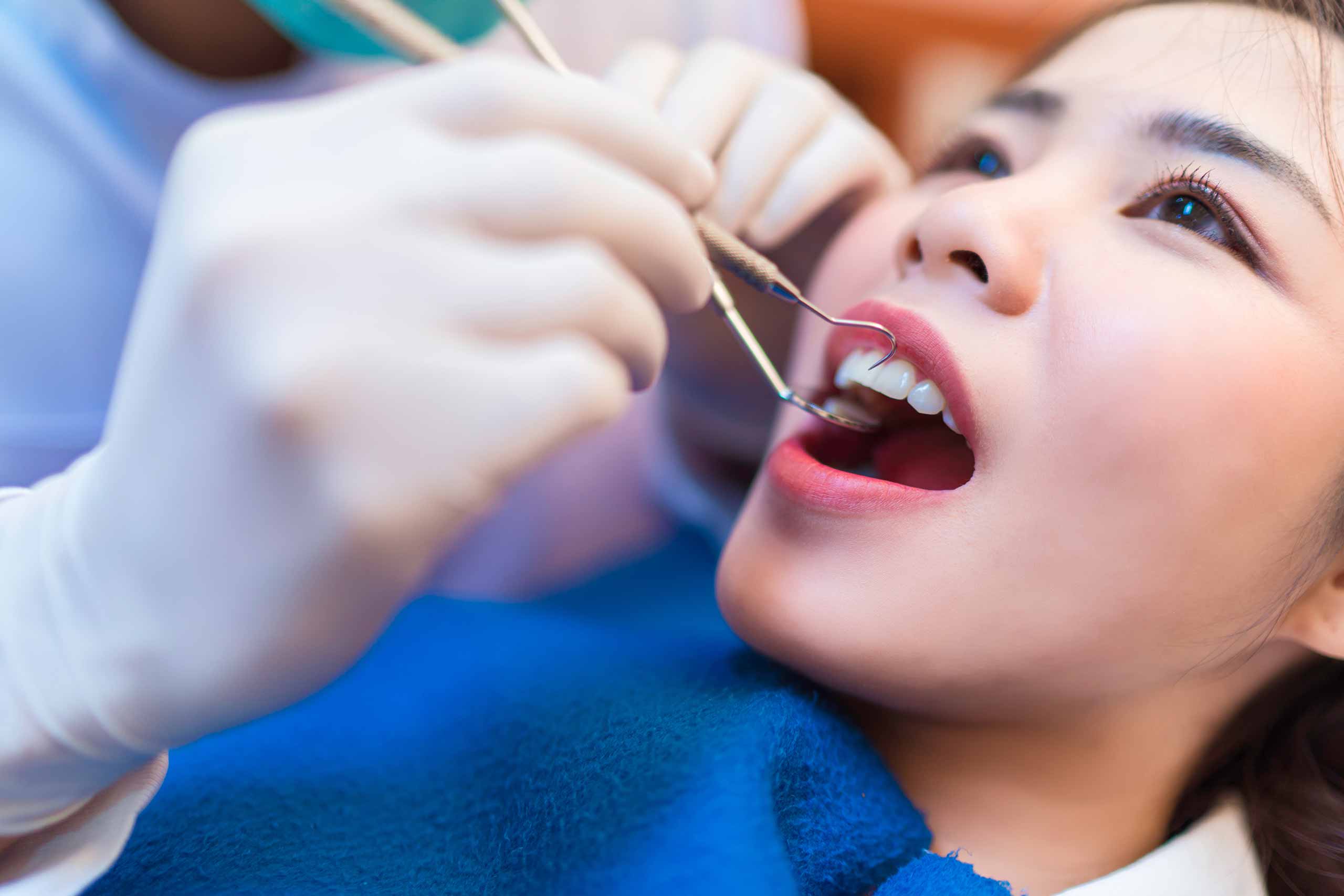Put On Retainers The Right Way: Use and Cleaning

If you have recently completed your braces or clear aligners journey, you might have been asked to put on retainers. Retainers are a critical part of your teeth straightening journey as it helps you retain your teeth alignment.
To help you maintain your beautiful teeth alignment, I have written this article guide which covers how to put retainers on properly, how to clean your retainers and important information you need to know about your retainers.
What are Retainers?
Retainers are custom-made orthodontic devices that are used as support devices after your braces or clear aligners treatment. They help ensure your teeth stay aligned and in place. While braces do the heavy lifting, retainers play a crucial role in preventing your teeth from shifting.
Why are Retainers Needed After Braces?
Why the need for this post-braces routine? Without retainers, your teeth might shift back to their original positions. Retainers step in to stabilise and maintain that hard-earned alignment, ensuring your smile stays the way you want it to.
Retainer Types
After braces, there are three types of retainers commonly used to maintain the alignment of your teeth.
Choosing the right retainer depends on factors like your orthodontic needs, lifestyle, and personal preferences. Your orthodontist or dentist will guide you in selecting the most suitable type to ensure the longevity of your post-braces smile.
Fixed or Permanent (Bonded) Retainer
Comprising a solid or braided wire, these retainers curve along the inner side of your teeth, secured in place by your orthodontist through a cementing process similar to braces.
Orthodontists often recommend fixed retainers if there’s a perceived risk of your teeth reverting to their original positions. These retainers, once applied, remain in place, offering continuous stability that cannot be easily removed. They are particularly favoured for teenagers when the orthodontist anticipates challenges with consistent wear of removable retainers.
While adapting to fixed retainers may involve a brief adjustment period, typically with the tongue, they are discreet and require care similar to other types of braces. It’s essential to be mindful of potential challenges in maintaining oral hygiene, as fixed retainers can pose difficulties. Consistent daily flossing and brushing are crucial to removing food particles and ensuring proper care.
Hawley Retainer
Hawley retainers feature an acrylic or plastic base combined with metal bands encircling your teeth. The acrylic or plastic part contacts the roof of your mouth or the lower jaw, while metal bars wrap around the teeth. Notably, a bar encircles the six middle teeth on the top and bottom, and two bars on each side embrace a molar.
Among the three types of retainers, Hawley retainers are the most conspicuous when worn. However, they stand out for their removability and superior durability. What makes them preferred by many is their ability to provide the most natural feel for your teeth, allowing them to rest against each other without any material covering their tops and bottoms.
While Hawley retainers may affect speech more than other types, they offer a natural feel that many find comfortable, though some adjustment may be required.
Clear Plastic (Removable) Retainer
Clear retainers provide an exceptionally precise mould of your teeth, moulding to their new positions, even capturing intricate crevices for a perfect fit. These retainers create a seal around all sides of your teeth.
When crafted accurately, a clear retainer should be virtually invisible on your teeth, with any slight gap between the retainer and the bottom of your teeth being inconspicuous. Due to their near-invisibility, clear retainers are a popular choice. Moreover, they typically have minimal impact on speech.
It’s important to note that clear retainers may be susceptible to warping from heat, potential damage, and gradual discoloration over time. To prevent such issues, diligent care of clear retainers is crucial. If you grind your teeth during the day or night, discussing with your orthodontist whether a clear retainer is suitable is advisable.
How to Put on Retainers The Right Way
How to Put on Hawley Retainers?
To properly put on your Hawley retainers, follow these steps:
Step 1: Clean Your Hands: Begin by thoroughly washing your hands to ensure cleanliness.
Step 2: Position the Retainer: Hold the retainer with the metal wire facing outwards and the plastic or acrylic portion facing inwards.
Step 3: Upper and Lower Arch Placement: For an upper arch retainer, gently slide the metal wire along the front surface of your upper teeth. Ensure the plastic or acrylic portion rests against the roof of your mouth. If it is a lower arch retainer, position the metal wire along the back surface of your lower teeth, while the plastic or acrylic portion is against the tongue side.
Step 4: Adjust for Comfort: Once in place, adjust the retainer for comfort. The wire should fit snugly against your teeth.
Step5: Check Alignment: Verify that the metal wire follows the natural curve of your teeth and that the plastic or acrylic portion fits comfortably in your mouth.
How to Put on Clear Retainers?
Step 1: Insert Clear Retainers: To insert, gently push the retainer over your front teeth, then apply pressure to the tops of your left and right molars using your fingertips until you feel the retainer snap into place. Avoid biting down on the retainer, as it can cause damage and compromise its long-term effectiveness.
Step 2: Remove Clear Retainers: Start on one side of your mouth, using your fingertip on the inside of your back molar to slowly pull the clear retainer away. Repeat the process on the other side, then work the retainer forward by gently prying it away from your teeth with your fingertips. Ensure the retainer is fully disengaged.
After removal, rinse the retainer with water, shake off excess droplets, and store it in your retainer case. For optimal hygiene, clean your retainers before placing them back into your mouth.
Do’s of Wearing Retainers
Similar to braces, it is necessary to observe these essential “do’s” when wearing your retainers:
Follow Recommendations Closely: Always adhere to the recommendations and instructions of your dentist or orthodontist. If full-time wear is advised, you should comply accordingly.
Thorough Cleaning: Clean your retainer meticulously by brushing it with cool water.
Remove During Meals: Take out your retainer while eating to prevent damage.
Safe Storage: Keep your retainer in your mouth or designated container. Placing it elsewhere may lead to accidental damage or misplacement.
Bring to Appointments: Remember to bring your retainer when visiting the orthodontist.
Post-Meal Tooth Brushing: Brush your teeth after every meal before putting on your retainer.
Gentle Placement: Use your hands to position the retainer in your mouth. Ensure proper alignment before biting down, as jaw muscles exert more force and misalignment can easily break the retainer.
Don’ts of Wearing Retainers
Here are key precautions to observe while using your retainer:
Avoid Hard or Sticky Foods: Consuming foods that are hard or sticky can potentially damage a retainer, especially with fixed retainers.
Do Not Leave Retainer Outside Container: Prevent leaving a retainer outside of its container for extended periods, as it may dry out, becoming brittle and fragile.
Do Not Use Hot Substances, Bleach or Alcohol To Sanitise: Do not boil a retainer in water or clean it with alcohol or bleach.
Do Not Use Abrasive Substances or Tools To Clean Retainers: Avoid brushing your retainer with abrasive substances like baking soda or toothpaste, as it can leave scratch marks that are conducive for bacterial growth. Should you wish to clean your retainers, use a soft-bristled toothbrush instead of a hard-bristled one for cleaning.
Do Not Toy With Your Retainers: Resist playing with a retainer inside your mouth.
Do Not Bite On Your Retainers: Refrain from biting your retainer to shift it into place as this can cause breakage.
Do Not Eat With Your Retainers On: Do not wear a retainer while eating.
Do Not Soak Your Retainer: Do not soak a retainer in mouthwash. It might also be advisable to limit consumption of water while wearing your retainers.
Do Not Play Sports With Retainers: Do not wear a retainer while playing contact sports; use a mouthguard instead.
Do Not Swim With Retainers On: Avoid swimming with a retainer in your mouth, as chlorinated water can damage the material and make it harder to find if it falls out.
Do Not Wear Damaged Retainers: Recognise that one pair of retainers may not last a lifetime; consult your orthodontist for replacements when they become damaged.
Foods to Avoid with Retainers
For individuals with a fixed retainer, it’s advisable to steer clear of many of the same foods typically restricted with braces. This includes, but is not limited to:
- Chewing gum
- Sticky candies
- Nuts
- Hard candy
- Ice
- Popcorn
- Tough, chewy foods
For items like ice and hard candies, the recommendation is to avoid biting down on them. It’s acceptable to let them dissolve in your mouth, but attempting to chew them should be avoided. Any food that has the potential to get stuck between your teeth and the retainer or cause damage should be omitted.
On the other hand, if you have a removable retainer, the list of restricted foods is not as extensive. You can consume a wide variety of foods with a removable retainer. Before eating or drinking, simply remove your retainer and proceed with your meal as usual. Two primary guidelines to follow are to keep your retainer in a secure place while eating and refrain from attempting to eat with your removable retainer in place.
When Should I Use Retainers?
Retainers should be used as directed by your orthodontist or general dentist, typically immediately after the removal of braces. Compliance with their guidelines ensures the stability of your teeth in their new positions.
You should wear retainers consistently, adhering to the recommended schedule, whether it involves full-time wear initially or specific durations throughout the day and night. The specific instructions may vary based on individual treatment needs, so it is crucial to follow the guidance provided by your orthodontic or dental professional for optimal results.
How Many Hours A Day Should I Wear a Retainer?
Wearing a bonded retainer involves continuous usage throughout the day and night. Conversely, for those with a removable retainer, specific instructions may vary based on individual treatment requirements.
The general guideline for a removable retainer is full-time wear, except during meals and cleaning, for the initial 4 to 6 months post-braces removal.
Contrastingly, a 2010 survey of orthodontists revealed that many recommend continuous wear of a removable retainer for at least 9 months following braces removal.
As time progresses and upon clearance from your orthodontist, there may be an opportunity to reduce wear to every night during sleep.
How Long Do I Need To Wear a Retainer After Braces Treatment?
As per the 2010 survey cited earlier, over 58 percent of orthodontists prefer prescribing removable retainers post-braces treatment completion.
A majority of the surveyed practitioners advocate daily retainer wear for the initial 9 months, transitioning to nightly wear thereafter.
The need for retainer usage persists, and while replacements may be necessary after a few years, it becomes an ongoing part of dental care.
Forty percent of respondents express a preference for permanent lingual retainers, meant to be retained lifelong.
Irrespective of the retainer type recommended by your orthodontist, it’s probable that continued, indefinite treatment with the retainer will be advised.
What Will Happen To My Teeth If I Do Not Wear a Retainer?
Throughout your life, the positioning of your teeth undergoes changes. If you’ve undergone braces, you understand that factors such as age and orthodontic appliances can influence the arrangement of your teeth in your mouth.
Completion of orthodontic treatment doesn’t guarantee the permanent stability of your teeth.
Failure to comply with your orthodontist’s retainer instructions may result in your teeth reverting to their former positions, a phenomenon known as relapse. Neglecting retainer wear could necessitate orthodontic intervention within a decade or even sooner.
Attempting to skip retainer wear for a few weeks or months may cause your teeth to shift, leading to an improper fit of the retainer on your teeth.
What Is The Best Way To Keep My Retainers Clean?
How To Keep Bonded Retainers Clean?
Incorporate the cleaning of a bonded retainer into your routine dental hygiene practices. Given the inability to remove a fixed retainer, utilise a floss threader to floss both the retainer and the front of your teeth.
While it may require some practice, you will become adept at this technique. Additionally, ensure that you angle your toothbrush both vertically and horizontally to effectively eliminate any plaque buildup or food particles surrounding your fixed retainer.
How To Keep Removable Retainers Clean?
Maintain the cleanliness of your removable retainer by rinsing it with lukewarm water each time it is removed. Doing so while the retainer is still moist with saliva helps prevent the hardening of food particles on its surface.
If recommended by your orthodontist, you can invest in a specialised soaking product to soak your retainer between uses.
Consider using a soft-bristled toothbrush and toothpaste to gently scrub every part of your retainer once a day. Exercise caution, as certain toothpaste types may be abrasive and potentially scratch the retainer. Seek advice from your orthodontist on suitable toothpaste options.
Should food debris become lodged in your retainer, use a clean cotton swab dipped in water to delicately remove it. Avoid boiling your retainer in water or attempting to wash it in the dishwasher.
Find out more about how to find the best Invisalign dentist to correct your teeth the second time.
How Do I Store My Retainers?
When your clear retainer is not in use, it should always be securely stored in its designated retainer case. This is the safest place for it.
Failing to keep your retainer in its case may lead to various unfortunate scenarios:
- Your family dog or pet might mistake it for a chew toy.
- A well-intentioned waiter at a restaurant might unknowingly dispose of it.
- Accidentally stepping on it after it falls on the floor.
- Misplacing or losing it in the hustle and bustle of daily life.
In all these instances, the result is the same – the inability to wear your retainer, which would lead to spending money and time to acquire a new set of retainers. The golden rule for retainer care should be: It is in your face, or in your case.
By adhering to these simple guidelines, you can ensure the safety of your clear retainers at all times.
What Should I Do If My Retainers Break?
If your retainers break, there is no need to panic – it happens more often than you think. Here is what you should do if you find yourself in this situation:
- Assess the Damage: Examine the broken retainer to assess the extent of the damage. Check for any sharp edges that could potentially harm your mouth.
- Contact Your Orthodontist or Dentist: Reach out to your orthodontist as soon as possible. Provide details about how the retainer broke and schedule an appointment for professional assessment and potential repair or replacement.
- Avoid Do-It-Yourself Fixes: Resist the temptation to fix the retainer yourself using household materials. DIY repairs may compromise its effectiveness and could lead to further damage.
- Keep the Pieces and Bring Them to the Dentist or Orthodontist: If the retainer has broken into pieces, gather them and bring them with you to the orthodontist. This can assist in the evaluation and potential repair process.
- Use a Temporary Measure Like Orthodontic Wax: If you are unable to see your orthodontist immediately and the break is minor, you might use orthodontic wax to cover any sharp edges temporarily. This can prevent discomfort or irritation until professional assistance is obtained.
Addressing a broken retainer promptly is crucial to ensuring that your teeth stay in their aligned positions. Delaying action could potentially lead to tooth movement, jeopardising the results achieved during your orthodontic treatment.
When Should I Replace My Retainers?
Retainers, much like eyeglasses, vary in lifespan. While some individuals may use a single pair of eyeglasses for years, others might replace them every six months. Similarly, it’s a universal truth that one retainer won’t endure throughout a lifetime.
Several factors may necessitate retainer replacement:
- Teeth Grinding or Clenching
If you grind or clench your teeth, especially at night, it can wear out the retainer.
- Loss or Breakage
Accidental loss or breakage of the retainer may occur, requiring a replacement.
- Teeth Shifting Due to Non-Usage
If you cease wearing the retainer, allowing your teeth to shift, a replacement becomes necessary.
For most individuals, a single set of retainers typically lasts between 2 to 5 years. It’s advisable to plan for periodic retainer replacements. Some orthodontists may offer the option to pre-purchase multiple sets, ensuring you have replacements readily available.
By adhering to the guidance outlined above, you can maintain the effectiveness of your retainers. This knowledge equips you to keep your teeth aligned for a lifetime.
Book an Appointment To Correct Your Smile in Singapore.
If you are thinking about correcting your smile further, or wish to have a second opinion on your smile post braces or clear aligner treatment, book an appointment with Kong Dental Surgery at one of our dental clinics.
Retainers FAQs
Do removable retainers need maintenance and care?
Ensuring proper care for your removable retainer is essential. Bacteria, plaque, and food particles can accumulate without regular cleaning.
Before reinserting your retainers, rinse them with warm (not hot) water. For a more thorough weekly cleaning, use a soft bristle brush and a drop of dishwashing liquid. Avoid toothpaste, as its abrasiveness can scratch the retainer’s surface.
While wearing retainers, stick to water only—avoid eating or drinking to prevent breakage or discoloration. In case of breakage or loss, promptly contact your Orthodontist to arrange for a replacement.
Can removable retainers fix teeth shifting?
If your retainer feels snug due to a missed night or two, wear it continuously for 24 hours, removing it only for meals, drinks, and teeth cleaning. Once the tightness subsides, return to nightly wear, but follow your orthodontist’s guidance.
Retainers are designed to maintain tooth positions, not to shift them. The thin plastic lacks the strength to move teeth. If significant shifting occurs and the retainer doesn’t fit properly, schedule an appointment with your orthodontist for assessment and adjustment.
What is the difference between fixed retainers and removable retainers?
The distinction between fixed and removable retainers lies in their design, application, and the way they are utilised to maintain post-orthodontic tooth alignment.
Fixed Retainers
- Attachment: Cemented directly to the back of the teeth.
- Material: Typically consists of a thin wire.
- Durability: Designed to stay in place for an extended period, often for many years.
- Invisibility: Not visible when smiling, as it is discreetly placed on the inner side of the teeth.
- Maintenance: Requires professional removal by a dentist or orthodontist.
- Advantages: Provides continuous stabilisation without the need for daily adjustments.
Removable Retainers
- Attachment: Made from clear plastic and custom-fitted to the teeth.
- Material: Usually constructed from a clear, thin plastic material.
- Durability: Generally worn during specific periods, such as nighttime, and may need replacement over time.
- Invisibility: Nearly invisible when worn.
- Maintenance: Can be removed for cleaning, making maintenance more straightforward.
- Advantages: Offers flexibility in wear time, and allows for easy cleaning and maintenance.
Both types serve the common purpose of preventing teeth from shifting back to their original positions after orthodontic treatment. The choice between fixed and removable retainers often depends on individual preferences, orthodontic needs, and the recommendation of the orthodontic professional.
Can I remove fixed retainers if I no longer want it?
Typically, fixed retainers remain in place for an extended period, cemented to the back of the teeth like braces. If you wish to have your fixed retainer removed, consult your dentist or orthodontist. However, it’s essential to consider the initial condition of your teeth – if there were significant irregularities, there might be a predisposition for them to recur. Engage in an open discussion with your orthodontist about your unique situation, as individual circumstances vary.
Will retainers guarantee that my teeth stay in place?
Regrettably, teeth, even those secured by fixed retainers, may experience movement if not directly linked to the teeth. Additionally, the retainer wire may shift during chewing, potentially causing tooth movement.
Make An Enquiry
Let us know your concerns and our clinic staff will get back to you in 1-2 hours.
Prefer to talk to our clinic staff directly? Call our clinic to chat with our friendly nurses at +65 6767 9502
General Information
-
Yew Tee Point
21 Choa Chu Kang North 6 #01-27 Singapore 689578
Tel: +65 6767 9502
(Please Enter The Clinic From Outside The Mall) -
Consulting Hours
Mon to Fri: 9AM to 9PM
Sat: 9AM to 6PM
Sun and PH: Closed
Related Articles
-

What You Need to Know About Invisalign
Are you or your child looking to straighten teeth with Invisalign? I have written a quick guide for you to help you understand Invisalign better...
Read More -

10 Signs You Need Dental Implants
What are some signs you need dental implants? You might have stumbled upon this article when researching dental implants for you or a family member....
Read More -

How Often Do You Need To See A Dentist?
We all know that keeping our teeth healthy and clean cannot be overlooked. Moreover, our oral health is closely related to our overall health.1 After...
Read More


